“They were old men with no scholarship. They told me
of their thoughts: the things they said within themselves
as they sailed with the stars and with the wild waters
about and beneath them.
I have never heard fairer things than fell from the lips
of those unlettered men. It was the poetry of the grace of
God.”
From a letter concerning the fishermen of Leigh in Essex of с 1900
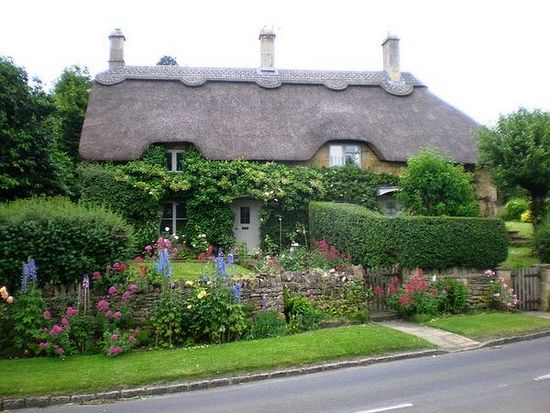
Of course it is true that England suffered the 11th century Papal reform of the Western Churches, and indeed this was particularly brutal in the British Isles, following, as it did, the papally-sponsored Norman Invasion of 1066. It is also true that England suffered another blow in the Reformation instigated by such tyrants as Henry VIII, Elizabeth I and the iconoclast Cromwell. All this represented a loss of spiritual culture, the denial of the saints, the deformation of ecclesial tradition, and the resulting loss of 'texture' or spiritual quality of English life. This is not to say, however, that the falling away or apostasy of England and the other Western nations from Orthodox Christian Tradition occurred everywhere at the same pace. Since the 11th century, England has experienced high and low points in her spiritual and cultural life. The high points represent a slowing down in the process of apostasy, the low points a speeding up. The high points have been spiritual and cultural peaks, when the English nation, her perception sharpened through prayer, fasting, repentance and love of the Gospel, has been guided by Christ, the Mother of God, her national saints and her Guardian Angel, and so glimpsed her soul. Conversely, the low points have been those moments when the English nation abandoned her spiritual and cultural traditions and moved away from her divine calling and destiny. However we may judge the past, and some high points and low points seem to be apparent at once, it seems clear that, as with other Western peoples, today is a period when the apostasy is speeding up and we are heading more and more rapidly for the Apocalypse.
 Holly.
Holly.
One is aware of this in small villages in England, where perhaps survive a Saxon church or foundation, the Hall, and clustered around them, the inn and black and white thatched cottages. In my own experience, I know for example of old people who through family tradition still regard the Julian calendar as the only true calendar. (In England the Julian calendar was changed for the Gregorian in 1752, when 2 September was followed by 14 September which caused rioting - not surprising when one considers for example that a month's rent would have to be paid for only nineteen days). Indeed the Julian or old calendar was until recently known as 'English style' and the Gregorian or new calendar as 'Roman style'. (See the Oxford English Dictionary). In old books one still finds the doggerel:
In seventeen hundred two and fifty, Our style was changed to Popery, But that it is liked we don't agree.
In farming families of my acquaintance in East Anglia, “Old Christmas” was religiously kept right up to Hitler's War. The same for “Old Michaelmas”. Similarly parish feasts, fetes or 'wakes' are still in some areas kept according to the “English style”. Such faithful people know from their grandparents' grandparents that Easter in England is kept on the wrong date most years. Such people, outside the Orthodox Church, bring to shame the Orthodox New Calendarists who seem to have less sense of tradition than they.
I would like now to speak of those traditions which I have either seen myself or read of, which all go back to a time when the English world was still part of Undivided Christendom.
It would seem that those ancient traditions are particularly associated with the Nativity of Christ. The Birth of Christ was an invitation to the whole of the cosmos to celebrate. It was said that at the moment of the anniversary of the Nativity that all Creation stood still—rivers ceased to flow, birds stopped in their flight. After this moment bells rang, even from churches that had disappeared under the waves, as at Dunwich in Suffolk, or from St. Wilfrid's Cathedral which long ago sank beneath the waves off Selsey in Sussex. And then dogs barked, birds sang, bees buzzed, cocks crowed. All Creation united in praise of the Creator become man. A child born on Christmas Day (or for that matter on any Sunday) would never be drowned, so it was said.
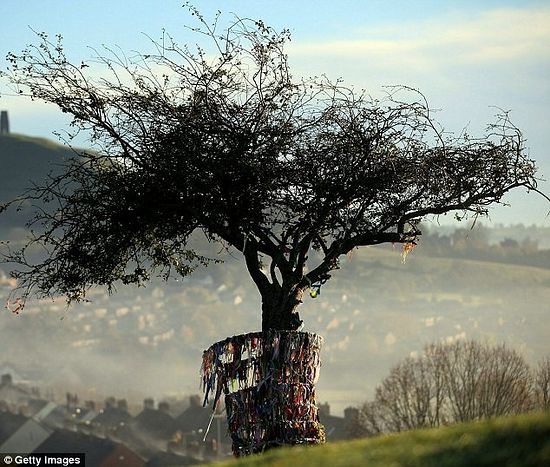 The Glastonbury Thorn. Photo: Getty images.
The Glastonbury Thorn. Photo: Getty images.
The food associated with Christmas was also symbolic. Christmas pudding, for instance, traditionally has thirteen ingredients, one for Christ and one for each of the Apostles. The mince-pie, which has been round in shape since Cromwell (who tried to ban it), was originally oval. This was to remind us of the shape of the manger and also the tomb of Christ (as on icons of the Nativity). The exotic ingredients, formerly with meat and spices, each represented qualities which the Birth of Christ had introduced into the world. This 'sacred' food was to be eaten in silence, while reflecting on the meaning of Christ's Birth. Today this has degenerated into simply pausing and making a wish before eating the first mince-pie. It was also said that every mince-pie eaten ensured a happy month in the coming year. Associated with this is the still existent custom of keeping a piece of Christmas cake all year.
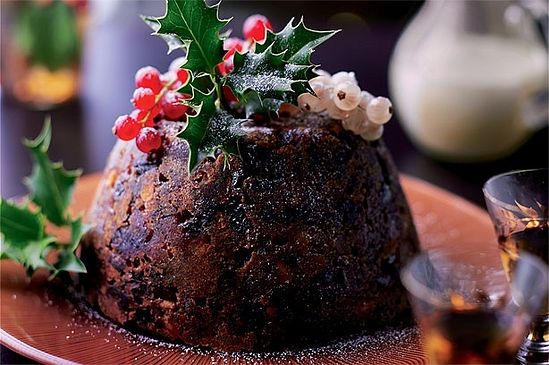 Christmas pudding.
Christmas pudding.
After Christmas, Childermas or the massacre of the Holy Innocents used to be, and I believe, still is, celebrated by special muffled peals of bells. Theologically, this feast is most significant, since it commemorates the sanctity of unbaptised but martyred children; perhaps in our churches the list of Holy Innocents should also include all those children who have been aborted from the beginning of the world. In general the English art of bell-ringing is quite unique and surely reflects some of the glory of our Orthodox heritage.
Candlemas, the Feast of the Meeting in the Temple, 2 February, 40 days after Christmas according to the Orthodox method of counting which counts inclusively, was once much celebrated. Today it is remembered only by weather sayings and the names “Candlemas bells”, 'Christ's flowers', 'Fair Maids of February' or 'Purification flowers' for snowdrops.
The childhood of Christ was also celebrated by various customs. Thus the juniper tree was said to have special qualities, for it protected Christ during the Flight into Egypt. To this day it is said that hunted foxes and hares find shelter under it, as did Our Lord. Lavender is said to have obtained its sweet fragrance from the fact that the Mother of God hung Christ's swaddling-clothes on it to dry.
 Juniper.
Juniper.
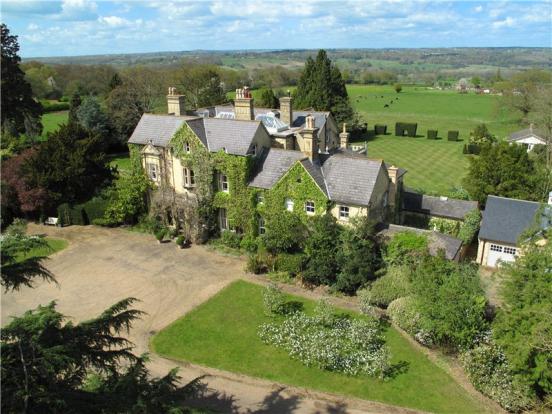
As regards flower-names, many are connected with the Saviour or the saints. Rose-campion is called “Our Saviour's flannel” on account of its soft, velvety leaves. Hypericum calycinum is commonly called “St. John's wort” and also “Aaron's beard”. Verbascum thapsus is generally known as “Aaron's rod”. And the Campanula medium is usually called the “Canterbury Bell”. Ragwort is also called St. James's wort and there is also of course the Michaelmas daisy, so named from the coincidence of the feast and its flowering. The cowslip is also called St. Peter's wort. [Incidentally another name for the haddock is St. Peter's fish, since he was said to have caught one (Matt. 17, 27), leaving marks on its back made by his finger and thumb.] The eider duck, similarly, is also called St Cuthbert's duck.
A great many traditions were and are connected with the Lenten cycle and Easter. The Saturday before Lent began, was and is called “Egg Saturday”, for then people started to use up their eggs, having already given up meat. The proverb “Marry in Lent, live to repent”, reminds us of the Church's prohibition of weddings during fasts. “After every Christmas comes Lent”, reminds us that the Church's Year was set by a rhythm of feasts and fasts, and also induces in us a sense of sobriety. The daffodil is still sometimes called “the lenten lily”. A common, meatless dish was lenten pie. Lent was also the marble season. This was so until a few years ago. The marble season finished at noon on Good Friday. The marbles were symbols of the stone that was rolled away from the tomb at the Resurrection of Christ.
 Skirrid Mountain.
Skirrid Mountain.
As at Christmas, Good Friday and Easter were marked by cosmic events. All Creation participated. Thus it is said that the hawthorn groans on Good Friday, because it was used to weave the crown of thorns. If the violet droops its head, it is because the shadow of the cross fell upon it at the Crucifixion. The robin has a red breast because he pulled thorns from Christ's brow, thus staining himself with blood. The expression “touchwood” comes of course from the custom of touching the Cross (wood) to protect oneself from the Evil One. To this day hot cross buns are eaten in England. Traditionally they have a healing power and are still eaten in some parts in much the same way as Orthodox eat prosphora or blessed bread from the Vigil. A few years ago a Herefordshire baker was recorded as saying: “Bakers are important men - the Birth of our Lord and his Death - we're at them both. We make mince-pies for His Birthday and hot cross buns for His Deathday.” Good Friday was also considered a day of blessing for certain activities. Thus if seeds are sown at noon on the day, flowers will come up double (a token of new life and resurrection). Also bread baked on Good Friday will keep fresh all the year. On the other hand it was said that any sewing done on this day would come undone.
 Hot cross buns.
Hot cross buns.
In 1991 the Orthodox Church celebrates “Kyriopascha”, that is to say the conjunction of Easter and the Annunciation. An old proverb about this is: “When Easter falls in Our Lady's lap, then let England beware of a sad mishap”. Let us hope that this will not be so.
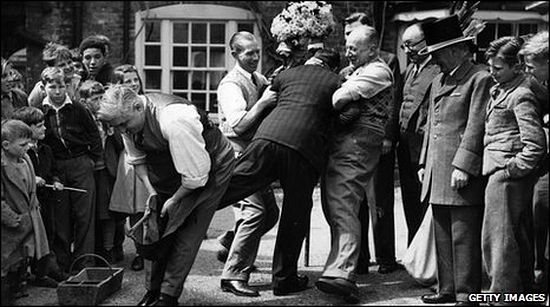 Hocktide. Photo: Getty Images
Hocktide. Photo: Getty Images
Ascension Day was celebrated piously in former times. If it rained on the day, the rain-water would be carefully collected and drunk. It was said that by His Ascension, Christ hallowed the sky and so the rain-water on this day had healing powers. I know that there are those who keep this custom to this day. On the other hand clothes must not be washed on Ascension Day, otherwise the life of a member of the family will be washed away.
Whitsun (Pentecost) means literally “White Sunday” from the fact that many were baptized on this feast and thus dressed in white baptismal gowns, but perhaps also from the white light of the Holy Spirit. In Somerset, “God's Land”, it was customary for women to wear white ribbons in their shoes, or at least carry a white flower, perhaps a daisy. It was a great feast and bells which were rung on this day were decorated with red ribbons to remind the faithful of the tongues of fire of the Holy Spirit. The main dish this day was veal, in other words, the Biblical “fatted calf”, with gooseberry pie. This became a problem with the calendar change in 1752 for gooseberries are not ripe for an early Whitsun. Indeed an old rhyme says: “For gooseberry tart at Whitsuntide, trim old wood out 'ere Christmastide”.
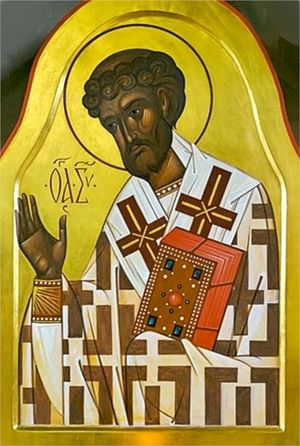 St. Swithin of Winchester.
St. Swithin of Winchester.
St. Swithin's Day if thou dost rain
For forty days it will remain;
St. Swithin's Day if thou be fair
For forty days 'twill rain no mair (more).
Less well known is: “Till St. Swithin's Day be past, Apples be not fit to taste”. Of a multitude of saws, which deserve an article in themselves, connected with agriculture we may mention: “David and Chad, Sow peas, good or bad”. (Do not delay sowing peas after 1 and 2 March). “On St. Barnabas Day (11 June) mow away, grass or none”, or “Barnaby bright, Barnaby bright, The longest day and the shortest night”. These rhymes witness to the missionary work of monks who taught peasant folk how to remember saints' days. Other rhymes include: “For Lavender, bushy, sweet and tall, tend upon the feast of Paul”, “Dig in old thatch at Annunciation, 'twill triple the yield; what jubilation.”, “Of taters you will have the most, Praise Father, Son and Holy Ghost, Plant Parsley fair on Lady Day, Away from Rhubarb and from Tare, Remember! - Say the Lord's Prayer”, “Plant Broad Beans on Candlemas Day, one for the Rook and one for the Crow, one for the Nick to rot away, And one with God's blessing to grow”, “To John the Baptist praise be due, the straw flower buds have just come through.” The great problem with these sayings is that after the 1752 calendar change, most of them became untrue. For example St. Barnabas Day, referred to above, was the longest day and the shortest night, but after 1752, it fell simply on June 11. What we now call an Indian summer is still called St. Martin's or St. Luke's little summer. The exclamation “By George” was originally an appeal to the nation's patron saint for help and intercession.
The sign of the cross is recalled in a degenerate form in crossing the fingers for luck and the schoolchild's solemn promise, “cross my heart and hope to die”. I know of housewives who still make the sign of the cross over any bread, cake or pastry they bake to ensure that it turns out well. Incidentally they make the cross in the Orthodox fashion - it should not be forgotten that the Roman Catholic inversion only goes back two or three hundred years. Similarly I know of people who still place a poker crossways over a fire, thus making the sign of the cross, to ensure that the fire does not smoke. Until the nineteenth century crosses would often be carved on doorsteps, sills and lintels, to “keep out the Devil”. At weddings millers used to set the sails of their windmills in a position known as “the Miller's Glory”, i.e. like a St. George's Cross, not a St. Andrew's Cross.
There are also birth and burial customs of great Christian significance. A child born at the “chimes hours” i.e. the hours when bells chimed for church services, the third, sixth, ninth hours and before Liturgy and Vespers, is still considered by some to receive a special blessing. The churching of women on the 40th day was also considered to be very important, a sure remedy for post-natal depression. The first thing to be placed in a baby's cradle was the Gospel. In Lincolnshire there was until recently a custom, or perhaps rather superstition, of receiving confirmation twice - this was thought to cure rheumatism! In the Marches confirmation was said to cure lumbago and sciatica. In Northumberland, just as among pious Romanian peasants to this day, the funeral clothes of a bride and bridegroom were an integral part of any wedding trousseau. In the West of England the faithful would put rue, hyssop and wormwood in coffins as symbols of repentance. How far have we come from such piety today!
In spite of 400 years of Protestantism, it is still customary in country areas to eat fish on Fridays, a mere remnant of Orthodox fasting—nevertheless something of which today’s “Neo-Orthodox” seem to be incapable.
As regards blessings, it should not be forgotten that the origin of the expression “Good-bye' is “God be with you”. Until the Reformation, the expression “Thank you” was less used, being replaced by “God 'a' mercy”, (God have mercy), which still survives in the Cockney “Lawks 'a' mercy” (Lord have mercy). A popular bedtime prayer was and is “the White Paternoster”: 'Matthew, Mark, Luke and John, bless the bed that I lie on”; I can remember being taught it in childhood.
One local tradition that I cannot fail to mention is that of the old shepherds on the Essex marshes. When they died, they were always buried with some sheep's wool in their hand. It was said that when at the Last Judgment, they would be asked why they had not attended church on Sundays, they would hold up the wool and thus be forgiven - for they too had been tending their flocks in Christ-loving wise.
Of all these fragments, reminders of the common Tradition, the most important in my view is that of Christian charity, the practice of the Faith. I have been told countless times by folk of how in our village poor families would systematically cook an extra plate of food for dinner. And this was during the Depression, when all my father had to eat was two crusts of bread and an “oxo mess” a day. Nobody knew who the extra food was for, but invariably a tramp, beggar or unemployed man, fallen on hard times, would come along and then a plate of food would go to him, with the words, “God bless you”. If that is not Orthodoxy, then I don't know what is.
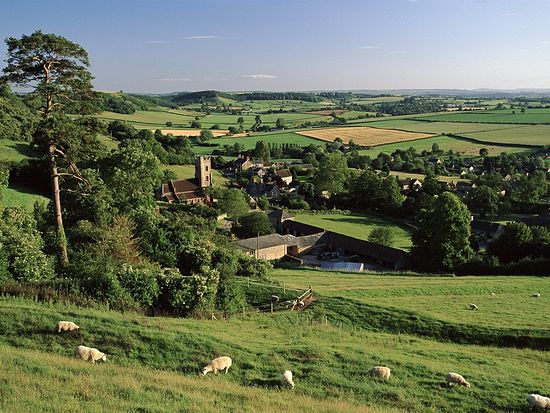
In former times England was called “Merry”, not in the corrupt modern sense, but in the ancient sense of the word, “Blessed”. Such customs did indeed bless a land. God does not forsake us, only we forsake God. Old English culture and tradition declared that all Creation is with God and shares in the joy of His Kingdom, for the Earth is here to call us to God. All that exists is a mere reflection of the non-material, real world beyond this one in which we have faith. That is why, in Old English, the word “Orthodox” was translated by geleafjul - faithful. At a time when we are faced with a choice between turning to the “West”, to Mammon, and turning to the “East”, to Christ, these traditions may help us to make the right choice. The fragments I have described above, and a great many others, may yet one day be reintegrated into that divine Tradition that we call the Orthodox Christian Faith and Church. May it be so, О Lord!
October 1990
